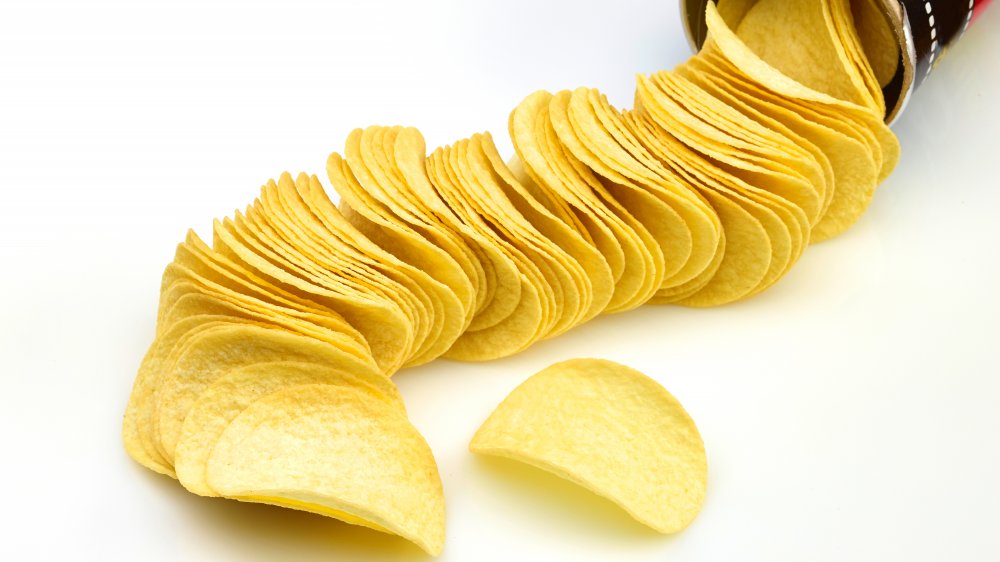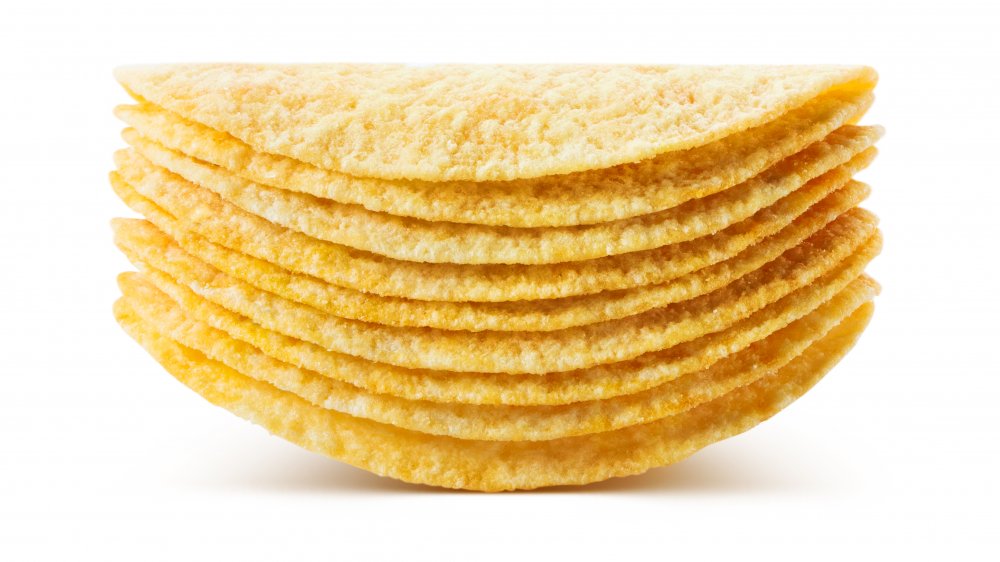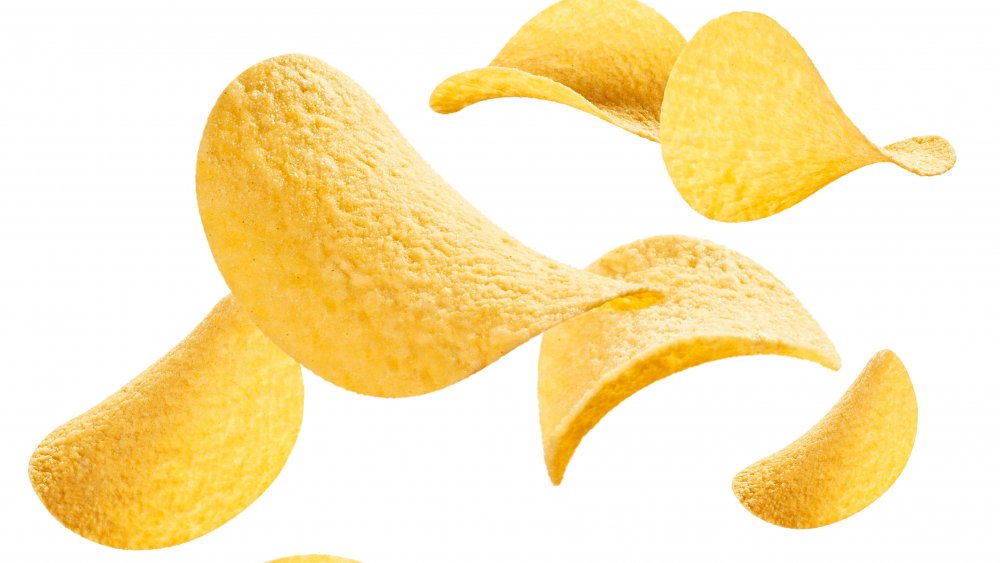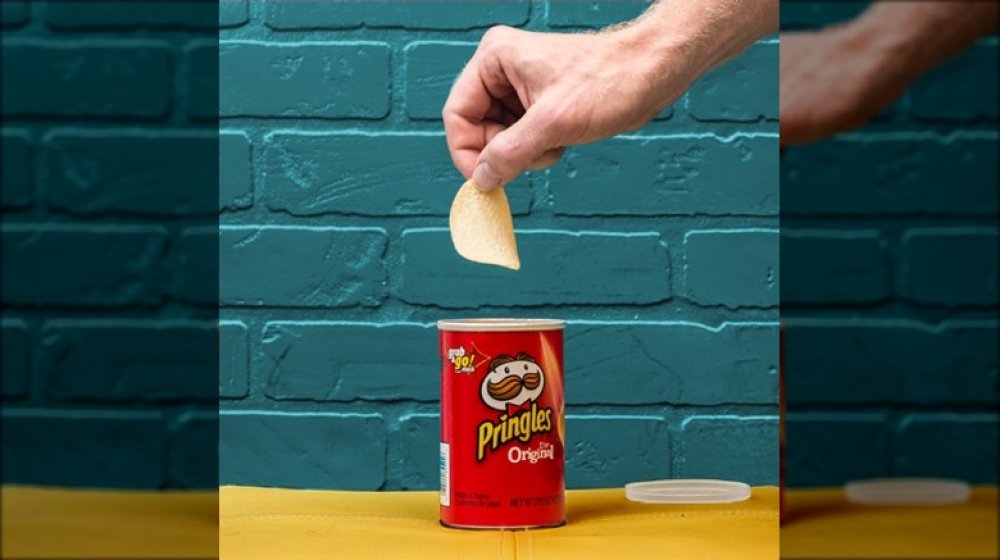The Real Reason Pringles Aren't Actually Potato Chips
From their inception, Pringles have sought to stand out from other brands and types of potato-based snacks. Delish says they were originally marketed as "Newfangled Potato Chips," but later changed the wordy name to the now almost universally-recognizable "Pringles."
The company prided itself on creating a chip that was engineered to solve the problems often associated with popular potato chip brands, which Pringles accused of becoming greasy and stale after opening, as well as frequently containing a good portion of broken chips at the bottom of the bag.
Due to their innovative design and distinctive packaging, Pringles have always been seen as slightly apart from other traditional potato chip brands, but there is some confusion as to if Pringles should actually be considered potato chips at all.
Taste of Home reports that Pringles do not even list "potato" in the snack food's ingredients, but are instead made with an ingredient called "dehydrated processed potato." In 1975, the U.S. Food and Drug Administration ruled that the company would have to change the packaging unless they were willing to state that they used this dried potato ingredient in lieu of real potatoes. The brand decided to go with "potato crisps" instead of "chips" to get around the FDA's label language rules.
Pringles took the classification of 'potato crisps' to court
This new "crisps versus chips" language, however, eventually caused some issues across the pond. The Atlantic reports that in Great Britain, all potato chips are called "crisps." The makers of Pringles, Procter & Gamble, reasoned that they were not making actual "potato crisps" as their product is not found in nature. They did this in an attempt to avoid a Value Added Tax that, according to How Stuff Works, is applied to all potato chips and similar foods made from potato or potato flour.
Pringles tried to argue in three different levels of British courts between 2007 to 2009 that their snack products did not contain enough potato to be considered the same food as potato crisps and should be considered a "savory snack" instead, and therefore, should be exempt from the tax. The courts did not agree, and eventually, Procter & Gamble had to cough up $160 million in taxes. The Atlantic says that Pringles are made of 42 percent potato, along with vegetable oil, rice flour, wheat starch, maltodextrin, salt, and dextrose making up the other 58 percent.
How Pringles get their signature curve
Gizmodo shares the process behind their striking, stackable shape. Unlike other potato chip brands, Pringles (which you will recall are, by their own legal admission, not chips!) begin with a mixture consisting of potato flakes, rice, wheat, and corn, which is rolled out into a super thin layer and then cut into an oval shape, similar to cookies.
The excess paste is then removed from the raw dough, which is set on a conveyor belt, and is now ready to finish being shaped. The chips are next formed into the brand's signature arch courtesy of a mold, and then quickly passed through boiling oil. After they're cooked, the chips are blown dry and sprayed with a powdered spice blend, the ingredients of which depend on which flavor they are going to become. Last, the chips are flipped into a stackable position and shuttled into their tall cans before being sealed and shipped off to their next destination.
It took a team of scientists to perfect Pringles
As a true team effort, Pringles were invented with the sole purpose of addressing a singular problem — the crispy potato snack was originally designed to solve the issue of too many chips breaking in the bottom of the bag. This concern was the topic of frequent customer complaints made to Procter & Gamble regarding their other snack food products.
Snack History says the company first employed an organic chemist named Fred Baur to solve this issue. Baur spent two years using supercomputers to figure out the best possible size and shape for the new chip and its innovative tube package. The dimensions he settled upon are aerodynamically designed to result in the least amount of breakage possible.
Baur was stumped by the flavor, so Procter & Gamble enlisted researcher Alexander Liepa to pick up where he left off. Eventually, Liepa decided the product was ready for market, and filed the patent for the snack on December 21st, 1976. The machine used to cook Pringles was designed by mechanical engineer and science fiction and fantasy writer Gene Wolfe, who based the apparatus on an invention by a German man whose name has sadly been forgotten. Wolfe said that the process of perfecting the machine that fills the cans was so arduous it nearly drove one of the team members assigned to it mad, as they were constantly being asked to increase the production rate.



